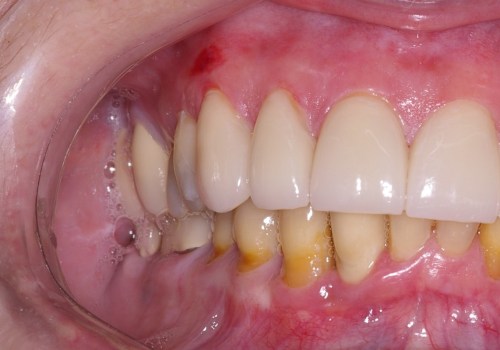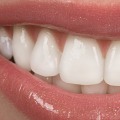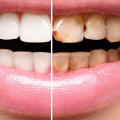Porcelain veneers require tooth reduction. The greater the reduction in the dental structure, it can cause pain and inflammation. This procedure uses anesthesia together with oral sedation if the patient is very anxious. Different people have different experiences with temporary veneer pain.
The use of temporary veneers can increase the sensitivity of teeth to hot and cold temperatures. This is the result of the newly removed enamel layer that leaves less space between these temperatures and the nerves in the teeth. Although nerve pain after veneers is rare, you should consider the possibility of mild discomfort during the several weeks you wear temporary veneers. There is usually some pain after the procedure as you get used to having veneers.
The pain also depends on how many veneers you have. If you only have one or a pair of veneers on your teeth, the pain will often be minimal or no pain. Have you considered getting a dental veneer in Houston? If so, you probably have at least a dozen questions about the procedure. When patients ask us about a veneer, their biggest concern seems to be whether the procedure hurts.
This is a very common and expected question, since the procedure involves removing part of the tooth surface. That can be a scary idea for any patient, however, when the procedure is actually done, it's more on the mind than anything else. So, let's dive deeper into the million-dollar question: does it hurt to put on a veneer? Of the entire process, this first step is one in which a small sample of patients can feel minimal pain. However, in general, these patients also tend to have sensitive teeth as they are, so understandably, a dental drill can hurt a little.
A dental drill is a tool that basically removes a minimal layer of enamel from the front of the tooth. This shaves the surface sufficiently so that the veneer can be flush with the rest of the teeth. The depth of penetration is so minimal that the nerves are not even close to being altered, so most patients will not feel pain. However, we have documented extremely rare cases where there is a mild amount of pain that resolves with Tylenol or an equivalent.
There may be some anxiety or discomfort about using the dental drill and the feeling, but it's very insignificant. In some cases, the surface of the tooth may not even need to be shaved, eliminating the possibility of minor pain. However, this is rare and is determined on a case-by-case basis. Most dentists should be able to work without being stopped or interrupted by patients due to discomfort or anxiety.
They need to work without interruption and the patient must be very still, since this type of work requires maximum precision. To ensure there are no interruptions, most Houston dentists will use local anesthesia injected into the gums. This injection is a very small needle and one of the least painful injections. It starts working right away and completely numbs the work area to ensure there is no discomfort or pain.
Many patients may not experience any type of pain, but they fear that something may or may go wrong. It is very common in the dental field for patients to have high anxiety during dental procedures. For anxiety, dentists often use nitrous oxide, as it relaxes you and makes the process easier. In the most severe cases, we offer sedated dentistry that puts the patient to sleep while the procedure is being performed.
This method is most effective for people with severe anxieties or phobias about dental procedures. Sometimes, some patients may have tooth sensitivity after the enamel is removed and until a veneer is applied to them. However, this is easily avoided with a temporary veneer that protects the teeth until the permanent veneer is ready. They are often referred to as a test smile, since they are also issued before permanent veneers are created.
It's a way to see if you're comfortable with veneers and to get used to the restored look of your teeth. The gums or soft tissue are not altered at any stage of the coating procedure. That said, there shouldn't be pain in the gums or soft tissue either. However, as with any dental treatment, you need to take good care of your teeth and gums to prevent infections.
You should follow your dentist's instructions before, after, and during the veneer procedure. To understand why veneers should be a painless process, we must analyze the procedure and the steps involved. Veneers are a very common procedure and are relatively simple compared to other procedures, such as dental implants. The veneer procedure usually involves three visits to the dentist.
The initial consultation where the dentist will determine if veneers are right for you. Then, your second visit is used to prepare, mold and apply temporary veneers. The last visit is for the application and after the consultation, where you will be advised on veneer care. Let's dive deeper into the process so you know what to expect.
This step is where you state your expectations, the problem you want to solve (stains, alignment, etc.). Your dentist will take images of your teeth and complete the impressions and molds. A reputable dentist will also be honest about your expectations versus realistic results. This way, you'll know exactly what you're getting into and what the precautions and limitations of veneers are.
To prepare teeth for veneer application, it is necessary to reshape the surface of each tooth to allow it to fit flush. If this isn't done correctly, you'll have veneers that extend beyond other teeth and cause bite and alignment problems. The amount of enamel that is removed from the surface of the teeth will be the same thickness as the veneer placed on top. This is usually about the thickness of a fingernail, so the nerves in the teeth are never altered.
However, if this part of the procedure makes you anxious or if you have sensitive teeth, you may need to put you to sleep. Some people are also very anxious to the point of having panic attacks, so sedation may be needed instead. That's a matter between you and your dentist, so be sure to share your concerns at the initial consultation. After tooth remodeling, it can take up to a month for veneers to be created in the laboratory.
In the meantime, you'll be given temporary veneers or a “test smile” to protect your teeth and get used to the veneers. Once the veneers are back from the lab, your dentist will ask you to come to finish the procedure. The dentist will place the veneers over the teeth to ensure that the fit and color are as expected. Veneers may need a small cutout to ensure an exact fit, and your dentist will repeat this process until it's perfect.
The color of the sheet metal can be adjusted to the tone of the bonding cement to be used. Once the veneers have been fitted perfectly, your teeth will be cleaned, polished and etched. The engraving makes the tooth surface rough to allow the cement to create a strong bond. A special cement is applied to the sheet metal that cures with UV light.
Veneers are placed on the teeth, placed correctly, and then the dentist will heal them instead. Curing is carried out with UV light, to which the chemicals in the cement react and harden quickly. A preventive follow-up visit may be performed to ensure that the link has been maintained and to check overall oral health. The best way to ensure that you're satisfied with your veneers and don't feel pain is to choose a qualified dentist.
You need a dentist who is specifically trained in dental veneers; not all dentists specialize in this procedure. Make sure the dentist you choose is properly accredited and has photos of real client cases. Ask all the difficult questions in advance and don't be afraid to ask them - a reputable dentist will not be offended. You can avoid the risk of having veneers in poor condition or undergoing a painful coating process by booking your appointment with us.
Our team of talented dentists with extensive and profound experience in veneers and more complex procedures will ensure a smooth process. What service are you interested in? General Dentistry Cosmetic Dentistry Dental Implants in Visalign & Orthodontics Sedation Dentistry Teeth Whitening. If you choose a dentist who has been providing you with dental veneers for several years, you're likely to experience this step painlessly. No, if the veneer procedure is handled properly, it should not have long-term side effects due to veneers.
Veneers are precision work, and if you want to avoid the side effects of veneers, you should always choose a dentist with a lot of experience and precision. When talking about the side effects of veneers, it's important to understand that every procedure has some side effects and that veneers are no exception. The process involves using a drill to remove the temporary veneers and ensure that the new veneers fit snugly. Next, we'll take a closer look at the dental veneer procedure so you can start it by knowing exactly what type of experience to expect.
Veneer placement involves a low-impact dental procedure, and many people have questions about the process. After this step, be sure to have a follow-up visit so that your dentist can check your veneers and the state of your dental health. Your dentist will guide you through the process and discuss considerations or customization options, such as choosing between porcelain veneers or composite resin veneers. Keep your dentist informed about the condition of your veneers and rely on their experience when it's time to buy a new set of veneers to keep your smile looking its best.
The most important part of your unprepared care is that you won't receive porcelain veneers because you can't do significant overbite correction with porcelain veneers. In this step, the dentist will use a drill to remove the temporary veneers and place them in new ones with an adhesive agent, such as an adhesive, to create a secure joint. . .











